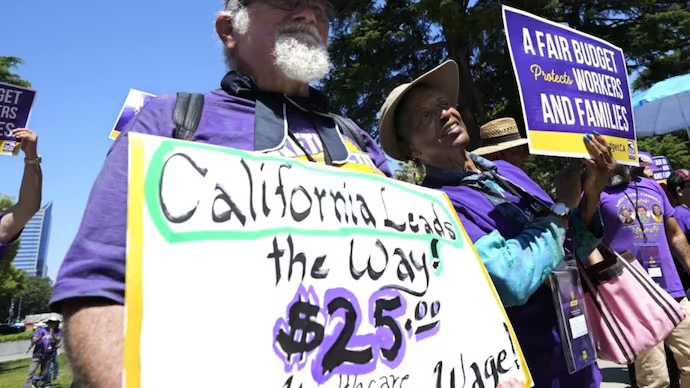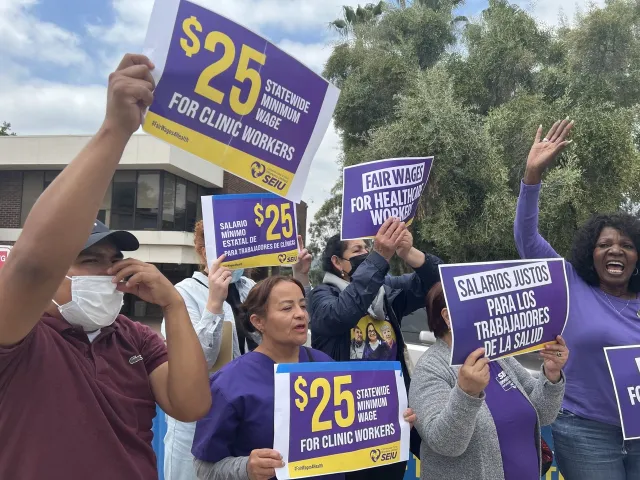The minimum wage hike in California, Oregon, and New York has become one of the most talked-about labor changes in the United States this year. Starting July 1, 2025, these states have implemented new wage laws, increasing hourly pay for millions of workers. While these changes bring hope for many low-income families, they also raise questions about business costs, inflation, and the future of employment.
In this article, we’ll explain what the new minimum wages are, why they’re changing, and how they might affect workers, businesses, and the economy. Whether you’re a worker, employer, or simply interested in state labor laws, here’s a complete breakdown.
What Is the New Minimum Wage in California, Oregon, and New York?
California: $16 per Hour Statewide
As of January 1, 2024, California set the statewide minimum wage at $16 per hour, regardless of business size. However, beginning July 1, 2025, two key sectors — fast food and healthcare — received even higher wage increases:
- Fast food workers: $20 per hour
- Healthcare workers: $23 per hour (for large health facilities)
This is a major move by California to adjust for the high cost of living and to support frontline workers who have historically been underpaid.
Oregon: Adjusted by Region
Oregon’s approach is different. It adjusts the minimum wage annually based on inflation and geography. As of July 1, 2025, the new rates are:
- Portland metro area: $16.25 per hour
- Standard counties: $15.20 per hour
- Nonurban counties: $14.50 per hour
This tiered system allows Oregon to respond to the varied cost of living across urban and rural areas.
New York: Catching Up Quickly
New York has taken a more gradual approach over the years, but it’s moving fast. As of January 1, 2025:
- New York City, Long Island, Westchester: $16.50 per hour
- Rest of New York State: $16.00 per hour
On top of that, the state has committed to annual increases tied to inflation starting 2027, which will be announced by September each year.
Why Are These Minimum Wage Hikes Happening?
There are several major reasons behind the minimum wage hike in California, Oregon, and New York:
1. Cost of Living
Inflation has driven up housing, food, transportation, and healthcare costs. Many workers, especially in cities, cannot survive on outdated minimum wage rates.
2. Post-Pandemic Recovery
Essential workers — like those in healthcare and fast food — were heavily relied upon during the COVID-19 pandemic. Lawmakers argue that these workers deserve better pay.
3. Worker Shortages
Businesses across the U.S. are struggling to fill positions. Higher wages help attract and retain employees in competitive markets.
4. Social Equity
The wage increases aim to close income gaps, especially for minorities, women, and younger workers, who are often stuck in minimum-wage jobs.
How Will This Impact Workers?
For millions of employees, this is a long-overdue raise. Here are some potential benefits:
Increased Earnings
Higher hourly rates mean more take-home pay. This can help families pay rent, buy groceries, and reduce the need for second jobs.
Reduced Turnover
With better pay, workers are more likely to stay in their jobs longer. This provides more job stability and helps with long-term financial planning.
Greater Morale and Productivity
Studies show that when workers feel fairly compensated, they perform better and take more pride in their work.
Less Reliance on Government Aid
When wages rise, fewer workers need food stamps, Medicaid, or housing assistance, easing the burden on state budgets.
Challenges Businesses Might Face
While the minimum wage hike in California, Oregon, and New York is great for workers, it poses challenges for employers:
Increased Operating Costs
Small businesses, especially restaurants and local stores, will need to pay significantly more in wages. This could lead to:
- Higher product prices
- Reduced hiring
- Cuts in hours or staff
Automation Risk
Some companies may invest in self-service kiosks or AI tools to reduce dependency on human workers.
Competitive Pressure
Businesses in low-wage states may resist expanding into higher-wage states due to cost barriers, affecting local economies.
Industries Most Affected
Some sectors are more impacted by the wage hikes than others:
Retail and Fast Food
These industries rely heavily on minimum-wage workers. Chains like McDonald’s, Walmart, and Starbucks will see large increases in labor expenses in affected states.
Healthcare
In California, many healthcare workers will now earn over $23/hour. While this helps hospitals retain workers, it also means private clinics may struggle to compete.
Hospitality and Tourism
Hotels, cleaning services, and event staff — often seasonal and part-time — will see wage costs go up during peak seasons.
Reactions from Workers and Employers

Worker Perspective
Many workers feel hopeful and proud of the changes.
“For the first time in years, I feel like I can save a little,” said Rosa Martinez, a 27-year-old cashier from Los Angeles.
“I’ve worked fast food for eight years. This raise shows we matter,” said James Lee, a supervisor in San Diego.
Employer Perspective
Business owners, especially in rural areas, express concerns.
“We support fair pay, but we also need help adjusting. Small businesses can’t just absorb a 25% wage jump,” said Maria Gomez, owner of a small bakery in Albany.
“I’m worried we’ll have to raise prices. Will customers still come?” asked Dan Wu, who runs a Portland food truck.
Could This Spark a National Trend?
Many states are watching closely. The success or failure of these wage hikes could influence other states’ decisions.
States Considering Similar Changes
- Washington: Already at $16.28/hour and could raise more
- Massachusetts: Advocates pushing for $20/hour
- Illinois and Colorado: May tie future increases to inflation
President Biden and many federal lawmakers have expressed interest in raising the federal minimum wage, which has been stuck at $7.25/hour since 2009.
Tips for Businesses to Adapt
Here’s how employers can prepare and stay competitive:
- Plan for Payroll Increases: Forecast budgets now to avoid surprises
- Invest in Employee Training: Higher-skilled workers justify higher pay
- Automate Smartly: Use tools that support — not replace — staff
- Streamline Operations: Find inefficiencies that can reduce overhead
- Promote Retention: Benefits like flexible hours and bonuses keep morale high
What Happens Next?
The minimum wage hike in California, Oregon, and New York is more than a short-term policy. It’s a sign that the U.S. labor market is changing. More attention is being paid to the real cost of living and the value of front-line workers.

Whether other states follow suit depends on how smoothly these changes are implemented — and how both businesses and workers respond.
Key Dates to Watch
- September 2025: New York will announce inflation-adjusted hikes
- January 2026: Most states evaluate wage changes for the new year
- 2027: States like California and New York begin automatic annual adjustments
Conclusion
The minimum wage hike in California, Oregon, and New York is a bold step toward addressing income inequality and the rising cost of living. While it brings challenges for businesses, especially smaller ones, it also offers a much-needed boost for millions of workers.
As the labor market evolves, both employers and employees must adapt to find new balances. In the end, fair wages are about more than numbers — they reflect the value we place on people’s time, effort, and dignity.
Read Next – Business Uncertainty Disrupts Hiring and Supply Chains






